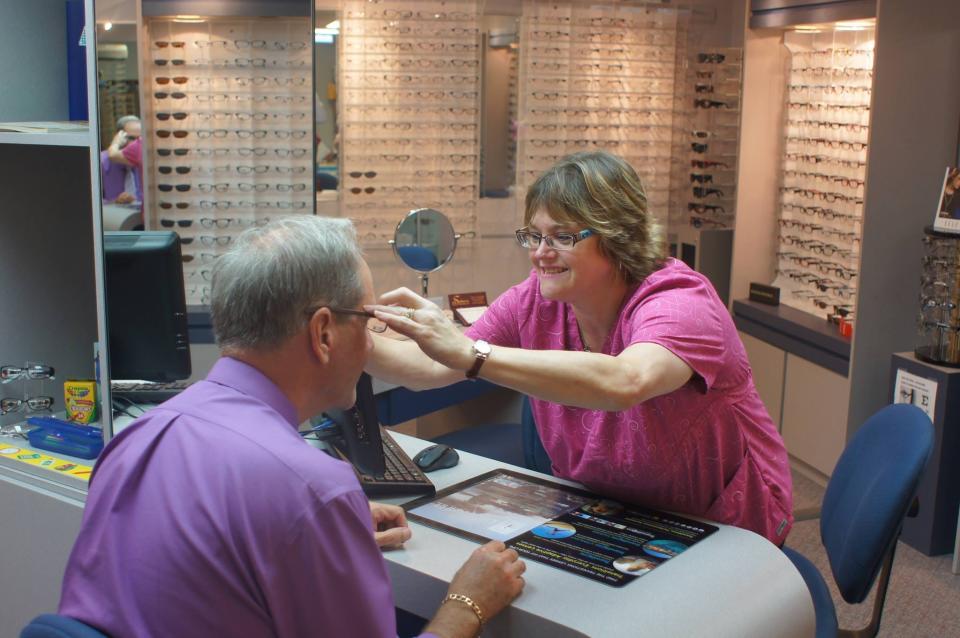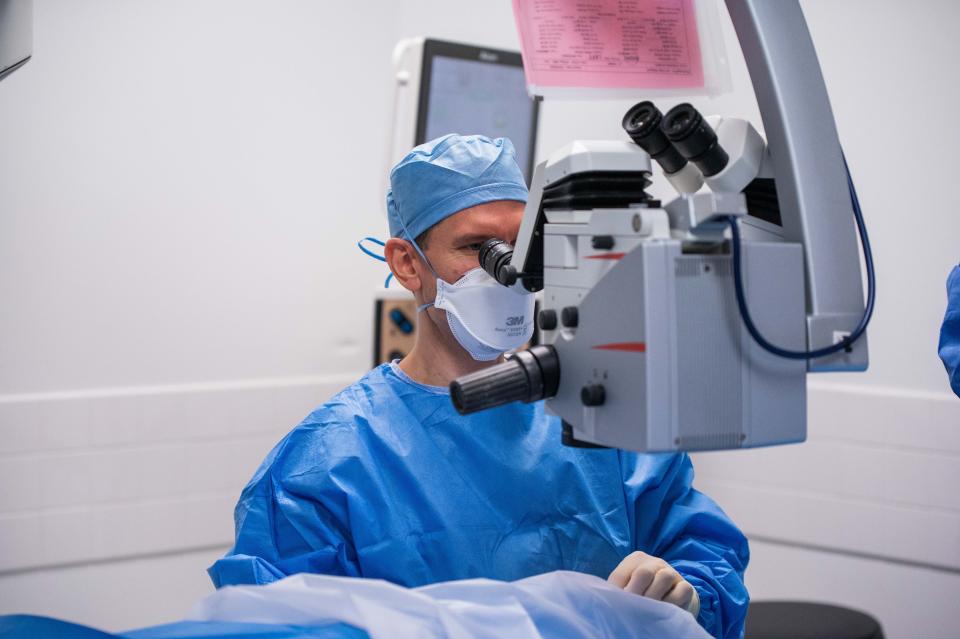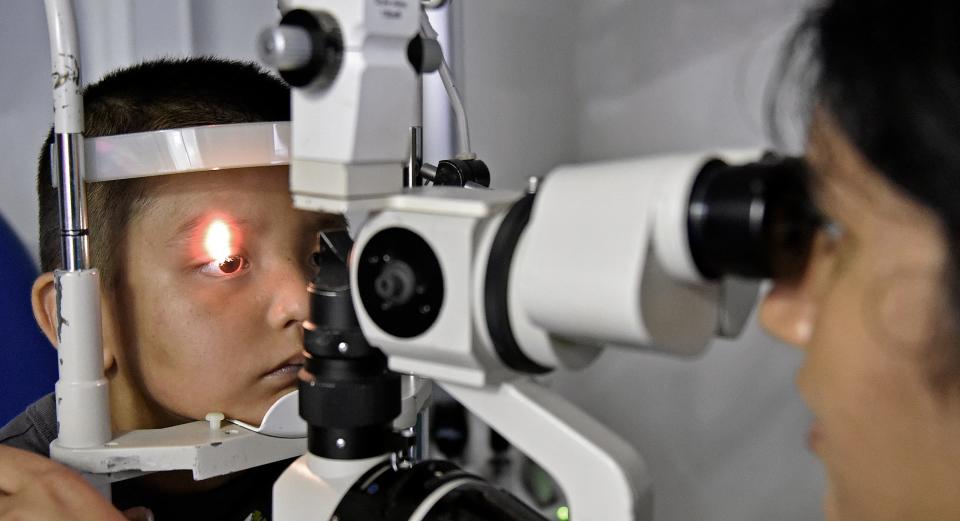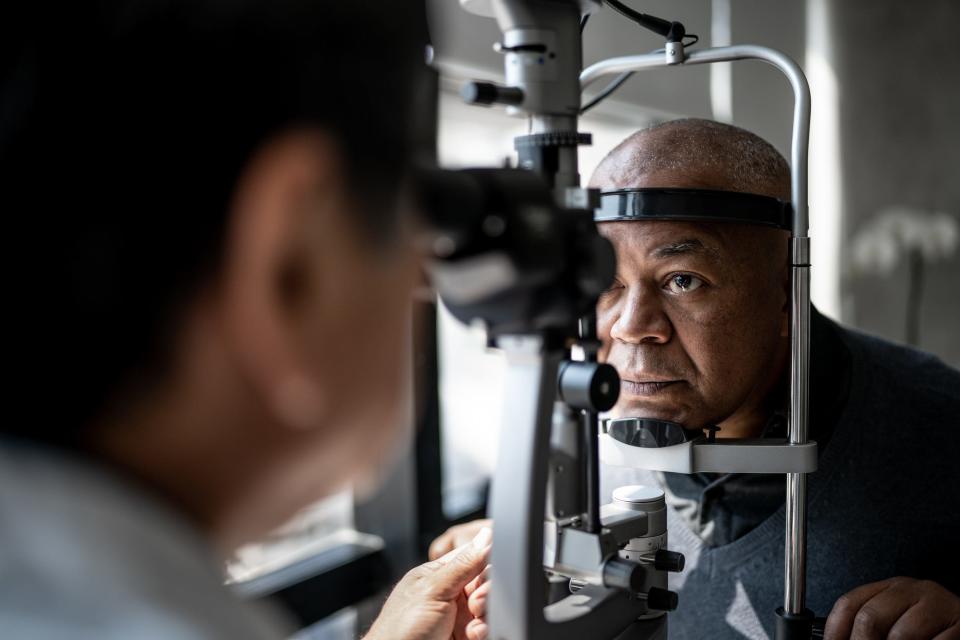Who should be allowed to do surgery on your eyes? Vermont Legislature is debating
Vermont's optometrists and ophthalmologists are battling over who is allowed to do surgery on your eyes.
A bill being considered by the Vermont Legislature would allow optometrists to perform certain surgeries that are currently the exclusive purview of ophthalmologists. Ophthalmologists are medical doctors and surgeons, while optometrists are primary eye care providers.
Dean Barcelow, president of the Vermont Optometric Association, explained optometrists complete four years of undergraduate training, followed by four years of graduate training on the eye, earning a Doctor of Optometry.
Dr. Jessica McNally, president of the Vermont Ophthalmological Society, said all ophthalmologists are physicians and surgeons, completing four years of an undergraduate degree program followed by four years of medical school. After medical school, ophthalmologists spend four to six years of residency and fellowship training that can include specialties such as general surgery, emergency medicine and internal medicine, but focuses primarily on advanced medical and surgical treatment of the eye, according to McNally.

Historically, optometrists have handed off to ophthalmologists for procedures including surgeries, injections and lasers, but that line is being blurred by legislation like that now being considered in Vermont. Recently, South Dakota became the latest state to expand the scope of work for optometrists − as the terminology goes − to include surgeries that previously only ophthalmologists could perform. The argument made by optometrists is that it expands on the in-office procedures they already do, increasing access and lowering costs for patients. The counter-argument made by ophthalmologists is that it's dangerous, because optometrists don't have the training or experience required.
What would optometrists like to do that they can't do now?
The surgical procedures Vermont optometrists want to add to their wheelhouse can be broken down into three "buckets," Barcelow said. The first bucket is injections into the "superficial eye," or the eyelid, not into the eye. Optometrists also want to be able to inject dye into a patient's veins to look for leaky blood vessels in the eye.
The second bucket is the removal of small, benign lesions, such as skin tags on the eyelid or close to the eyelid. The third bucket, Barcelow said, contains three "very well-defined laser procedures." The first is related to cataract surgery.

"When you have cataract surgery they put a new lens in the eye and take the cloudy one out," he said. "Sometimes six months, sometimes 10 years later a film will grow on the back of that lens and we'll zap it off with a laser. It takes two to three minutes, or longer if the film is thick or the patient is jumpy."
The second procedure involves using a laser to add an "emergency drain" to the eye when the natural drain closes up and fluid begins to build up. The third laser procedure also has to do with improving draining by stimulating the tissue that drains the eye to become more efficient, which is particularly useful for glaucoma patients in early stages of the disease, or who can't take drops, according to Barcelow.
"This isn't something that's a giant deviation," Barcelow said of the procedures. "We already use sharp and scary things around the eye."
Barcelow accused ophthalmologists of "saber-rattling" to make people nervous.
"Name anybody you would like to come near your eye with a scalpel," he said.
'You could do a lot of damage if you don't do it right'
McNally addressed each of Barcelow's buckets. First bucket: injections into the superficial eye − the eye ball − and the ability to inject dye into patients' veins to check for leaky blood vessels in the eye.

On the subject of injecting dye to check for leaky blood vessels, called a "fluorescein angiogram," McNally said the injection often causes nausea and sometimes vomiting and potentially anaphylaxis, a life-threatening allergic reaction.
"I don't do them in my office," McNally said of fluorescein angiography. "There's testing equipment − a camera − that provides similar if not the same results and is widely used by optometrists. We don't understand why they want to do angiograms."
With regard to the second bucket, removing small benign lesions in the eye, McNally said the question of whether a lesion is benign is fraught with uncertainty.
"Optometrists would say they are trained to figure out whether a lesion is benign or malignant and make a decision whether or not to take them off," McNally said. "Our specialists who take care of eyelid lesions will tell you they've been surprised and taken off lesions they thought were benign and were malignant. We're very concerned about misdiagnosis. One of the things that concerns us is the simplicity with which (Barcelow) presents these lesion removals."
McNally also contends optometrists underplay the significance of cutting off a lesion near the eye.

"Removing lesions and cysts requires using a scalpel, with sutures afterward, and the potential for unexpected bleeding," McNally said. "We've discussed with the Office of Professional Regulation and legislators that it's very difficult to anticipate whether or not you're going to need to place sutures and you have to be ready for that."
And finally, lasers. McNally said she is very disturbed by the prospect of optometrists, who don't have the extensive training and experience of using lasers on patients that ophthalmologists have, doing the procedures in Barcelow's third bucket.
"The reason these lasers seem quick and easy, as optometrists claim, is because we're trained to use them, and it's supposed to be easy for the patient," McNally said. "It's not easy for the surgeon doing it. You could do a lot of damage if you don't do it right because you don't have the experience."
State report gives both sides victories, but should it have been written in the first place?
The Office of Professional Regulation issued a 258-page report requested by legislators on Oct. 31, 2023, that recommended expanding optometrists' scope of practice to include specific injection and laser and non-laser surgical procedures. OPR qualified that recommendation by saying only optometrists with a "specialty endorsement license" should be permitted to perform these advanced procedures.

To get the specialty endorsement license, optometrists would have to complete a post-degree "preceptorship" − essentially instruction − in performing the advanced procedures on "live, human patients." Optometrists would also have to pass examinations showing they know how to do the laser and non-laser surgeries and injections.
Finally, optometrists performing these advanced procedures would be required to report the outcomes to OPR biennially, and to report "adverse events" to OPR immediately.
On the questions of improving access and lowering costs for the procedures optometrists would be able to do, OPR said it was unable to determine whether expanding the scope of practice for optometrists would do either, undermining a key argument optometrists make for taking this step. As a result, both sides claimed victory after the OPR report was issued.
McNally sees a bigger problem with the OPR report. She doesn't think OPR should have been put in the position of creating the report in the first place.
"How do you assure patients are safe when there's no standardized surgical training?" she said. "OPR has been forced into this position. They had to make a recommendation based on what they were asked to do. This is what they came up with. I don't feel they have the medical expertise to make recommendations. Clearly they don't think optometrists are trained to do these surgeries, or they wouldn't require them to go for more training."
Contact Dan D’Ambrosio at 660-1841 or ddambrosi@gannett.com. Follow him on X @DanDambrosioVT.
This article originally appeared on Burlington Free Press: Vermont optometrists push for expanded scope of work for eye surgery

